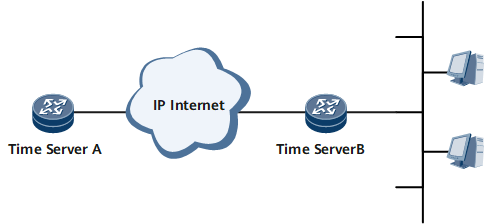Application Scenarios for NTP
Applicable Environment
The synchronization of clocks over the network is increasingly important as the network topology becomes increasingly complex. NTP was developed to implement the synchronization of system clocks over the network.
NTP ensures clock synchronization for the following applications:
When incremental backup is performed between the standby server and client, both system clocks must be consistent.
Complicated events are profiled by multiple systems. To ensure the order of events, multiple systems must be synchronized to the same clock.
Normal Remote Procedure Call (RPC) should be ensured. To prevent the system from repeatedly calling a process and to ensure that a call has a fixed period, the system clocks must be synchronized; otherwise, a call may time out before being performed.
Certain applications must know the time when a user logs in to the system or when a file is modified.
On a network, the offset between system clocks may be 1 minute or less. If the network is large, it is impossible for the network administrator to enter only the clock datetime command (command for time setting) to adjust system clocks.
Collecting timestamps for debugging and events on different Devices is not helpful unless all these Devices are synchronized to the same clock.
NTP synchronizes all clocks of network devices so that the devices can provide multiple applications based on the uniform time. A local NTP end can be a reference source for other clocks or synchronize its clock to other clock sources. Clocks on the network exchange time information and adjust the time until all are almost identical.
Application Instances
As shown in Figure 1, the time server B in the LAN is synchronized to the time server A on the Internet, and the hosts in the LAN are synchronized to the time server B in the LAN. In this way, the hosts are synchronized to the time server on the Internet.
